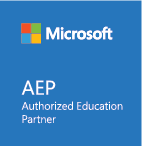3 Ways to Support Staff and Accelerate Learning Next Year
- Dec
- 14

January technically arrives in the middle of the school year. However, the tradition of setting resolutions and planning ahead is still plenty applicable.
Before students arrive back from Christmas break, take some time to ensure the entire school is supported academically and emotionally.
1. Start planning your budgets
No matter when you make your budget, the beginning of the year is a great time to start looking ahead.
It may be impossible to predict how the world will shift – will COVID-19 finally take a back seat, or yet again shutter your school? Either way, it’s safe to assume hybrid learning is here for the long haul. Setting aside some funds for updated hardware and collaboration tools like Google Meet is a direct investment in uninterrupted education. You’d be in good company, too. More than 170 million students and educators are already using Google Workspace for Education worldwide.
Found a tool you think is a smart buy? Veteran educator Suzanne Capek Tingley says you should be prepared to answer these three questions when weighing approval: How will the new technology improve student learning? What proof can you show that it will improve student learning? Will the improvement be worth the cost?
2. Do a tech audit
While you’re thinking about what tech to budget for, it’s a good time to see how equipped your school is for the year to come. That starts with reviewing the hardware and software you’re already using – and identifying any tools that may be underused.
“A broad tech audit can assess technology operations, classroom technology, infrastructure design, staffing and data flow, among other factors,” says Alex Inman, president of the consulting firm Education Collaborators.
The goals are threefold: Identify what’s getting used most (and least), update where needed and cull the underutilised. From there you can make a plan to invest in tech that lasts.
For the foreseeable future, remote and hybrid learning tools should be the focus, along with collaboration tools that make it possible to learn from anywhere.
Be sure to give some attention to the apps educators are using, too. Some may be compromising your school’s cybersecurity or collecting student information in a way that doesn’t align with your district’s privacy standards.
3. Focus on the mental well-being of staff and students
The past 19 months have been a crash course in prioritising our emotional well-being.
Understanding that a large majority of mental health disorders emerge before students graduate high school explains why they’re particularly vulnerable. Based on research out of Australia, it’s estimated that “half of all mental disorders emerge by the time people are 14 years old and three quarters by 25 years old.”
But youth aren’t the only ones who need support. A recent RAND Corporation study found that nearly two-thirds of teachers are experiencing burnout – up from a quarter at the beginning of the pandemic. “A number of factors contributed to this rise, including having to learn new technology skills on the fly, concerns about students who were suffering (physically, socially, academically), and juggling their own caretaking responsibilities for their families amidst the pandemic,” reports the EDC.
Since students and staff often cycle and struggle together, it’s important to simultaneously implement developmentally appropriate programs that encourage emotional well-being for both. Keep mental health an ongoing conversation for everyone on campus to help destigmatise it.
Just remember that without action, resolutions are little more than good intentions. Taking these three tangible steps will aid the whole school in acing this next semester.






